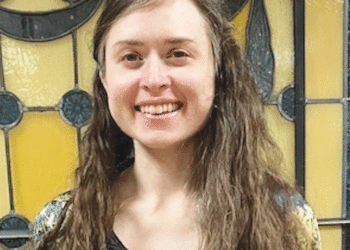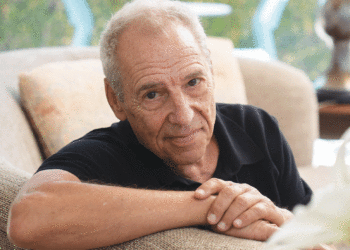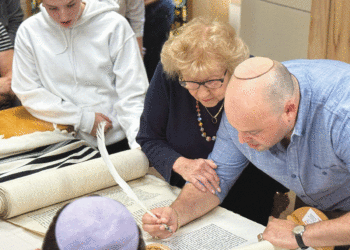With members, staff and clergy aligned in common purpose, the Minneapolis shul prepares to become a sanctuary for immigrants facing deportation.
By MAXWELL KENT
Luke Weisberg, board president of Shir Tikvah in Minneapolis, could not be more excited about the coming winter season. His excitement does not stem from the eventual drop in temperature, but rather that the season could finally mark the next step in a process that started in January.

“We have made the commitment to become a sanctuary synagogue; but as you may know, we are in the middle … of our building’s construction,” Weisberg said. “We are also dealing with a whole bunch of bureaucratic stuff right now, so we need to get those details figured out before anything else happens.”
Donald Trump’s harsh stand on immigration, the vow to deport 11 million undocumented immigrants, added a sense of urgency for Jewish congregations, including Shir Tikvah, to eventually vote to make their synagogues into sanctuaries.
Sanctuary congregations are part of a national movement, which began in the 1980s, when Christian congregations across the United States proclaimed their houses of worship as safe havens for Central American refugees fleeing repression and civil war. The movement dissipated and then recovered during President Obama’s second term, when the number of deportations increased.
The sanctuary movement is gathering steam once again, with 700 faith communities participating. Several U.S. synagogues have already voted to make themselves sanctuary congregations.
The sanctuary idea arose at Shir Tikvah after several congregants proposed a sanctuary synagogue initiative to the Reform shul’s staff. Since then, congregants, staff, board members and clergy have worked tirelessly to prepare for the day when Shir Tikvah could host a family seeking protection from deportation.
“We announced the board’s decision at the Shabbat services on the night of President Trump’s inauguration, so we moved much quicker than usual to meet that time constraint,” Weisberg explained. “The reaction was very positive. As is typical of Shir Tikvah, people were very excited to be engaged and clearly saw it as a useful and appropriate step for the synagogue to take.”
Weisberg emphasized that the sanctuary synagogue initiative falls perfectly within the mission of both the board and the congregation — but there is more work on the horizon. There is little the congregation can do immediately, as building construction is not set to end until late fall or early winter.
“[The board] recognizes that Shir Tikvah’s mission is to go out into the world and help correct the injustices present in everyday life. So stepping into this role does not feel unusual. But there are eighteen hundred details we need to get finished.”
Despite the daunting work ahead, Weisberg said he is optimistic about the impact of this project once completed. However, he expressed some concern about the congregation’s commitment to these issues in the long run.
“First, I hope we could in fact do some good for a family that is facing the horrors and tragedies of an expected deportation,” he said. “Second, I hope that we can activate members of the congregation to engage in this at a policy level and at a protest level in a much longer and sustained way.”
Throughout the spring, the congregation held “Sanctuary Rapid Response Trainings” conducted by the Minnesota non-profit organization ISAIAH. The organization partners with communities of faith to promote racial and economic equity in Minnesota. The Rapid Response trainings at Shir Tikvah aimed to educate members of the congregation and the Jewish community about tools to promote transparency, hold local law enforcement and ICE accountable, and to minimize risk of maltreatment of immigrants.
Rabbi Michael Adam Latz, Shir Tikvah’s senior rabbi, said that advocating for and helping immigrants should resonate throughout the congregation and Jewish community as a core Jewish responsibility.
“Just as Abraham and Sarah welcomed strangers into their tent, our obligation as Jews is to welcome the stranger into our sanctuary. It’s a central mitzva we teach,” he says.
Shir Tikvah — Hebrew for “Song of Hope” — prides itself in the congregation’s philanthropy and humanitarianism in many areas of the community. Creating a sanctuary in the synagogue is the logical next step.
Latz said he was “humbled, but not surprised, by the response of the congregation. This community is profoundly dedicated to living Jewish values and wrestling with hard issues. Issues of justice, compassion, and human dignity. This is just the next chapter of us living out our Jewish values.”
As political events unspool at a dizzying pace over recent months, Latz emphasized the importance of renewed and effective dialogue within the congregation, the Jewish community, and the state about racial and ethnic issues — particularly those concerning immigrants.
“We are responding to an American election, and a president who has shown epic indecency and who has forgotten that we are a nation that flings open its doors to immigrants,” Latz remarked, and added that, as Jews, “we know happens when nations close their doors to refugees. This is a moral duty that every Jew, every person of faith, and every American has to call on their political representatives and advocate for those seeking security and safety.”
Beyond emphasizing the moral duty to help immigrants, Latz warned of one consequence of American indifference toward the needs of immigrants.
“If the U.S loses our reputation as a beacon of hope, as a nation of refuge for the people who suffer most, what on earth is our purpose?”
***
Maxwell Kent was the American Jewish World’s summer intern. He attends Macalester College.
(American Jewish World, 8.25.17)


















